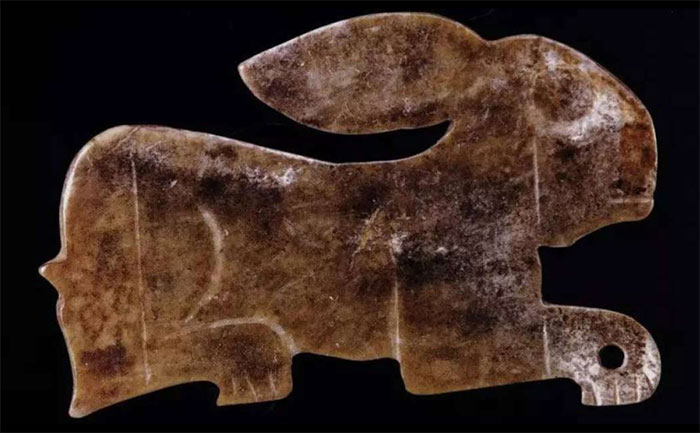The ancient Chinese people raised rabbits as pets from 5,000 years ago
Farmers in Neolithic China may have known to raise hares as pets, forming close relationships and almost domesticating small animals since time immemorial.
Rabbits can live within close proximity of ancient settlements and residents may have fed them, indicating what may be involved in taming hares. This relationship can start naturally when animals are attracted to crops, but eventually grow more like pets. It could also be the first inhabitants to even revere spiritual or religious animals, further allowing the local population to grow.

Wild rabbits have been domesticated as ancient pets by ancient Chinese.
Other excavations in northern China also show symbolic depictions of hares beginning about 3,000 years ago.
An international team of researchers analyzed the bones of 54 desert rabbits (Lepus capensis), using isotope analysis. Isotope levels are influenced by the type of nutrients that animals eat, different foods have different isotopic ratios that can show what ancient animals and humans ate. Most of the animals discovered were eating wild plants but about one fifth of their diet was dominated by millet grown by farmers for long periods.
The researchers said the domestication of some plants and animals transformed the interaction between humans and countless other domesticated animals and plants. Animals that stimulate interaction mean that animals benefit from a relationship with humans, which not only benefits and harms but can also affect the evolutionary trajectory of the animal. object.
Humans began hunting hares in the Stone Age and in the Bronze Age, about 5000 BC and developed closer relationships with hares in some parts of the world. The researchers noted that tracking the development of human-to-human relationships could help inform how ancient China was spiritually, socially and economically developed.
These findings suggest that changes in land use patterns indirectly affected the diet and behavior of small wildlife mammals on the loess plateau during the mid to late Holocene period. , a process that could form a co-evolutionary trajectory. This process, the authors note, not only shows the spread of agricultural development but also prolongs the importance of the relationship between humans and hares in China.
- Rare "blue dragons" have washed up on the Texas coast
- Discover the scariest "treason" gun of World War 1
- On the way, the man suddenly hit the stone worth $ 2 billion
- Video: Cats also have their own language
- Are rabbits really crazy in March?
- Chinese ancient tomb packing 30 tons transferred to the laboratory
- Ancient Chinese were knowledgeable about the epidemic 3,000 years ago
- Ancient 'beast' version of 4 meek modern creatures
- 6 incredible 'masterpieces' make the whole world 'crouch' in front of ancient Chinese people
- Evidence of Chinese silk production from 8500 years ago
- Robots can replace pets in the future
- People can transmit influenza virus to pets
- These animals symbolize luck in world culture
- A lot of things about ancient Chinese cricket cages: Great artifacts of mankind
- The 4,000-year-old Chinese tomb contains bodies of living victims
 Discovered an ancient centipede fossil 99 million years old
Discovered an ancient centipede fossil 99 million years old Discovered bat-like dinosaurs in China
Discovered bat-like dinosaurs in China Discovered a 200-year-old bronze cannon of the coast
Discovered a 200-year-old bronze cannon of the coast Discover 305 million-year-old spider fossils
Discover 305 million-year-old spider fossils